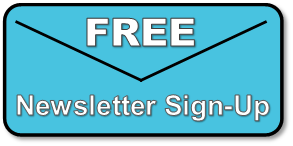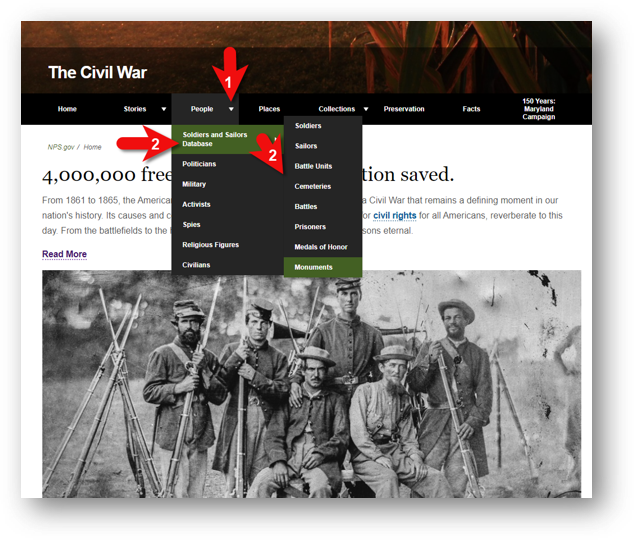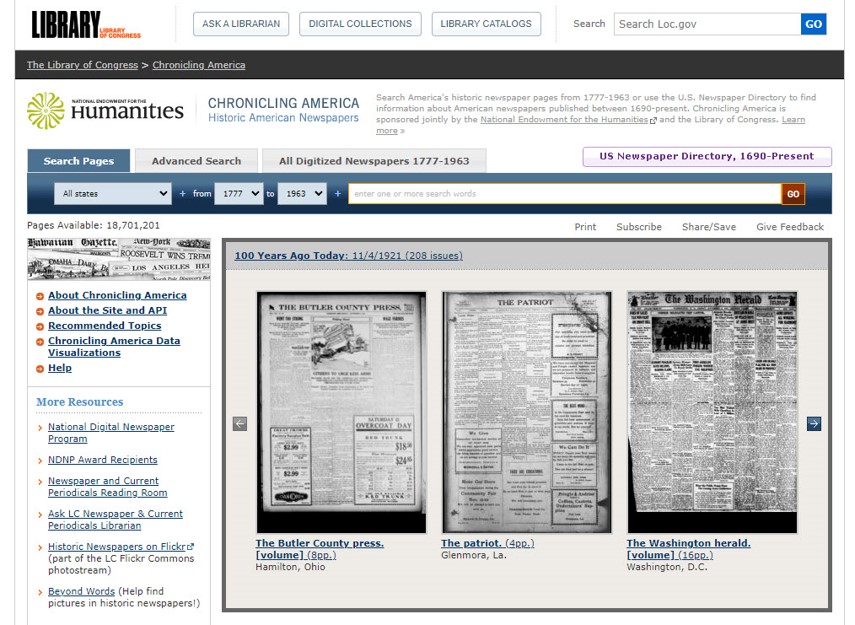16 ways to find your ancestors’ town of origin
Show Notes: Whether you want to visit the village where your ancestor was born on your next vacation, or you just want to find their records, you’ll need to know the exact place name and location. Professional genealogist Rich Venezia of Rich Roots Genealogy joins me in this video to help us pin down those ancestral places.
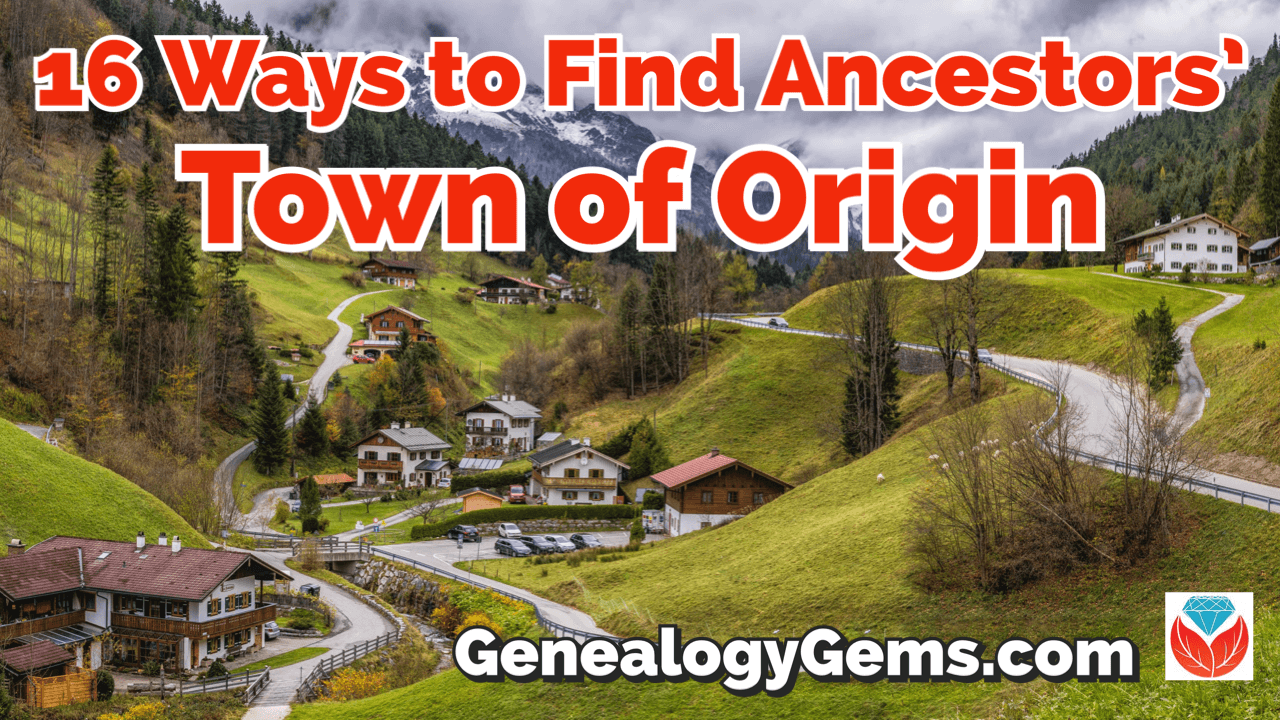
Video and show notes
Watch the Video Premiere with Live Chat
Show Notes
Download the ad-free Show Notes handout for Premium Members.
Ancestral Villages: Why near enough isn’t good enough.
Lisa: This is such an important topic; we’ve got to know where people came from to be able to track them down. I was just reading your article. It’s called Hometown Heroes, and the September / October issue of Family Tree Magazine. In it, you said something really interesting right off the bat, which was you said that “near enough isn’t good enough.” What are you trying to help people understand when you say that?
Rich: When we start with our research, we’re often starting with censuses especially, right? Those are often kind of the backbone of a lot of American research. And so, if people are moving around a lot, or if you aren’t exactly sure where they lived, because of the decennial census, you might be able to track them around and say, for example, they were living in California. Then you could figure out what they were first in Los Angeles, and then we went to San Francisco ,or whatever. But a lot of other countries, especially Western and Eastern European nations, don’t have similar types of these censuses, or at least not that are available to us. And so, if we only know, let’s say, the state where they’re from, or the province or region in a different country, it’s often really difficult to figure out where the records are, because a lot of times the records are going to be held at a really local level. So, unless you know that exact town or village, more often than not, you’re going to have a lot of difficulty getting any records and moving your research further back in the old country, because you really need to pinpoint that exact location.
Lisa: That’s a great point. Sometimes a record says, Warsaw, but they weren’t really in Warsaw, they were just really close by. Is that fairly common?
Rich: Yeah, precisely. My parents, I got to tell them that we know the exact Italian villages where their grandparents were all from. They always said Naples, right, or they heard Naples as part of their family story, but none of them are from Naples. They’re all from 45 minutes or an hour and a half outside of Naples. But I think that happens pretty frequently in the type of research that we’re doing.
Even today, when you meet people around the world or across the country, they’ll probably won’t often say the suburb of New York or Philly or DC, where they’re from. They will usually just say the city that’s close by. So, I think that kind of pervades today. Remember that when you see big cities listed on a death record or something like that, you might need to dig a little further to ascertain whether it was indeed that city or if it’s someplace that’s close by.
16 Records that can help you find your ancestor’s village
#1 Ship Manifests
Lisa: In the article, you give 16 sources that we can turn to, to try to pin this all down. Let’s start with number one, which I think is excellent, which is ship manifest.
Rich: Ship manifests are a great way to start when we’re looking for our ancestors who came over voluntarily and were interested in finding a better life for their family.
The problem with manifests is that they weren’t really used to regulate immigrants because of the laws in the United States until around the late 1800s. And so, because of that, there’s not always great detail on them. So, if you’re like me, and you have a lot of 20th century immigrant ancestors’ manifests, and they can often give you most all of the information that you need. But if you’re researching earlier ancestors, you might very well never find a manifest because there wasn’t one created, or the manifest is only going to give you a country of origin as opposed to any place more specific.
#2 Naturalization Records
Lisa: Number two is naturalization records. I love these. I just think they’re an amazing resource. Tell folks about what these are and what they might have for us.
Rich: Naturalization records are often kind of the next steppingstone when we’re researching immigrant ancestors. They relate to the process to become a US citizen, which was never a requirement, so you may find them for immigrant ancestors, but you may not.
Again, starting in the 20th century, we see really helpful information on these records, we generally get exact places of birthplace of last residence, which certainly isn’t always the same information, ship of arrival, and lots of other great details. But because of kind of the lack of regulation of these, or lack of federalization of these records, the forms weren’t standardized prior to the early 1900s. And as such, again, we run into this situation where every now and again, you’ll find a record from the 1850s that is super helpful and gives an exact place of origin and lots of other great genealogical details. But most pre-1906, naturalization records aren’t generally going to give you that exact location of origin that you really need to go across the pond.
Lisa: Sounds like we have to do a lot of collecting of all the different records. You never know which one’s going to have it. I know, in the case of my great grandparents, that was the only document that mentioned this little village of Kotten in East Prussia. Everything else was much more generic, and kind of the general area. So, you never know.
#3 Vital Records
Lisa: Number three is vital records. Birth marriage and death, right?
Rich: Right. These are a great way to, again, collect a lot of documentation and see maybe where, if you’ve got 10, or 15, or 20, to order, only one or two of them might have the precise information that you’re looking for. But if you’re researching a family that came over at different times, if you’ve got uncles and aunts and cousins, you want to get all of those records, because it might only wind up being the last nephew’s death record that lists the place of origin of his parents. And it sounds crazy, but I’ve seen it before, where you gather together all of this documentation, and if there’s 30 possible records to get, it’s the last one that has what you need. But that makes it really important not to skip out on all the records because it could be the only thing that mentions it, especially sometimes for earlier immigrants.
#4 Marriage Licenses
Lisa: Number four is marriage licenses and, and marriage records, which typically are somewhat older than some of the other available vital records, correct?
Rich: Yeah. I do very little colonial research, but I do know, there’s often colonial marriage bonds that people might be able to find. But also, in a lot of places, like in Pennsylvania, where I live, for instance, the marriage licenses in the county start in 1885. But the births and deaths for the state don’t start until 1906. So, you do often find that marriage records or marriage licenses might wind up predating some of the vital records.
In some cases, like for New York City, for instance, you may have the opportunity to get two or more different records related to the same event. There might have been an application for a marriage license, and then a marriage license or a marriage certificate or marriage return. And a lot of times, they’re not necessarily filed together. You might need to go digging around and looking to see if there are other records.
For instance, in New York City, they have a second set of marriage records. They have marriage licenses that people have to fill out prior to getting married, and the marriage certificate. And so between, I think it’s 1908 and 1937, there’s the secondary document that you definitely have to get because it asked for birthplace. It also asked for parents’ birthplace, and that information is not listed on the certificate. So, if you just stop with a certificate, you might be missing some great additional information.
Lisa: Hmm, reading between the lines, I’m really hearing you saying we’ve got to research the jurisdiction to know what they have, and what kind of records are created in their process because that varies a lot.
Rich: In Pennsylvania, we started marriage record keeping in the counties in 1835. And actually, for the first six years, there was a second copy that went to the state. So, if you happen to have people married in this small timeframe, you’ve got a county record. That’s the county record that was sent to the state which should be identical but might not be.
There’s also the potential for the religious record, right. And in some places they had city marriage returns as well, so there might be a possibility to find three or four or even five different records that all document the same event, but because the records are kept by different people, for different reasons, there might be a lot more information on some than on others.
Lisa: Every record has possibility. I love it!
#5 Church Records
Lisa: Church records can go much older too, right?
Rich: Right. Absolutely. And that’s especially for folks researching ancestors who were Catholic. The Catholics were, and are, notorious record keepers. And they’re often very interested in figuring out or noting down, where the parties had been baptized to make sure that people getting married were Catholic, or the people that were baptizing their children were Catholic.
We’ve also got great records that go quite far back like the Quakers. There’s the Friends records, many of which have been digitized by Ancestry. And of course, there are other religions that have their own records, many of which may have not yet been digitized, but which could certainly include the same type of information about origin or place of residents, place of baptisms, something like that. So, it’s always a good idea to make sure to look for those types of records as well.
#6 Draft Registration Cards
Lisa: For number six we go a new direction toward military records: World War One and World War Two draft registrations. This might be new to some people/ Tell us about these.
Rich: Sure. These are records that are generally relatively easily findable on the big websites, Ancestry, FamilySearch, Findmypast, MyHeritage, etc.
Oftentimes, they did ask for a place of birth. And so most immigrants who were here in the early to mid-1900s, that were born sometime from about the mid-1870s forward, should end up in these records, but that doesn’t mean that they served in the military. But if they were a man of draft age, they would have needed to fill one of these out.
Again, we run into this issue of the more recent, usually the more records are available. But in this case, it’s great, because you’re not just looking for people that wound up becoming citizens, you’re not just looking for people that may have been Catholic or whatever. All men that would have been between these certain ages on these dates, would or should have filled out these records. And so, these records may indeed, specify that exact location of origin.
#7 Military Serve and Pension Records
Lisa: Yes, they are one of the most comprehensive collections available. it really does cover everybody, which is terrific. But if they did serve, for number seven you have military service and pension records.
Rich: These are one of kind of the first ports of call that I would want to look into for an earlier immigrant ancestor.
We have pension records back to the Revolutionary War, and they move forward. The War of 1812, of course, was the big preserve the pensions project a few years ago, and they go up to the Civil War, and even a bit later, to the Spanish American War.
Folks whose immigrant ancestors served in the military, even if they came over 250 years ago, their pension records or their military service records could be really helpful. A lot of times, there’s things like affidavits that say, my name is John Smith, but I was born on this date, and this place, or it might even just say, the county in Ireland, for instance, or England. But even still, that’s obviously much more helpful than just Ireland or England.
There’s sometimes things like copies of family Bible records, or marriage records, because you have to remember that when we’re talking about pension records, we’re oftentimes talking about other people that would have been affected. So, if the ancestor died in the war, or shortly thereafter, their widow or their minor children could have been eligible for this pension. And so of course, they would need to prove the relationship. So, if the marriage occurred back in the old country, or something like that, there might be copies of these records, affidavits, some type of testimony that provides that which could all lead us to clues about that immigrants’ origins.
Lisa: Yes, it’s a record collection that could lead to many different kinds of records.
#8 Employment Records
Lisa: Number eight might be a little bit rarer, but gosh, if it exists, it would be well worth going after: employment records.
Rich: Yeah, these records sets definitely require a bit more advanced research. You definitely first need to figure out where your ancestor worked. But also, a lot of times, you need to do a lot of digging to determine where the records are, if they even exist, right? A lot of times we’re talking in archives, you’ve got to get boots on the ground, you’ve got to get your hands dirty with old records. But there are some really excellent employment records, some of which have been digitized. But we’re talking very few of these records have had been put online. Some railroad records have been, and so some of those have been put on some of the big websites. But a lot of times, we’ve got to figure out where the company was headquartered. Is it headquartered in a different place now than it was 100 years ago? Where might these records be, and also what type of records might exist.
There are some great repositories. The Historical Society of Pennsylvania, the Heinz History Center, in Pittsburgh, for instance, has a great selection of employment records for Pittsburgh based companies, Alcoa, Heinz, Westinghouse. If your ancestor happened to go to work at one of these places, these records have now been put in an archive. They’re much more accessible than if the archive still remains with the company which may be much more difficult to get your hands on.
You may find things like applications for employment, or even just information about employees. There could be information about place of origin, there might be newspaper, there might be periodicals, a lot of companies did newsletters. And so there might also be things about somebody that passed away, which can elicit information, or new hires, for instance. There’s all sorts of possibilities.
This is definitely not the type of thing that you search it, and you find it easily. These are often hard-won victories, but they can be some really great, really interesting records. And oftentimes, well, sometimes, they may include a photograph as well, which can be really special.
Lisa: I agree with you, they do pose more of a challenge. They are kind of a good back pocket item when nothing else is panning out. And I have to say, I had a grandfather and a great grandfather who worked for the railroad. I was amazed to see the Railroad Retirement Board records available through the Atlanta National Archives. I mean, it was well worth it!
#9 Social Security Applications
Lisa: Well, gosh, well, silly me! I forgot to ask rich about item number nine, and that record group is social security applications. In his article, he says, “Social Security began in the mid-1930s, and most everyone who was alive and eligible applied throughout the following decades. Social security applications known as the SS-5s, asked for both a place of birth (albeit, often just to country of birth) and parents’ names. The SS-5s are available for a fee through a Freedom of Information Act request to the Social Security Administration.
#10 Alien Registrations
Lisa: Next we have alien registrations. I haven’t done much research in this area. Tell us about this.
Rich: Alien registrations weren’t really very regulated until the latter part of the 1800s, early part of the 1900s. Prior to that point, there are only a handful of times where there might be some instances of alien registration. But we do see some during the Alien and Sedition Acts shortly after the country was formed in the late 1700s. Unfortunately, most of the alien registrations from that timeframe were destroyed.
There was a period of time where, if you were naturalizing, you had to provide a copy of that alien registration. There is a 12-year period in the 1800s where naturalization records will contain a copy of an alien registration and they can contain information about exact location when they arrived. All the members of the family, the minor children, what have you, and that’s just not what we often find on these early naturalization Records.
There are some instances where earlier you’ll find some alien registrations available. And then once we get to the 20th century, of course, we have many more available during World War One and World War Two. There were enemy aliens who had to register, there was a nationwide alien registration in 1940. There’s a couple of statewide alien registrations in Maine, Minnesota and North Carolina. So those records are also available.
Alien registrations are a bit more difficult to research and wrap your head around, because it really depends upon the location of where they were living. You have to determine if there was some type of alien registration happening at that time.
The only really comprehensive registration, in terms of alien registrations, would be the one that occurred right before World War Two in 1940 and continued on to 1944. If you do have ancestors that were 19th or 20th century immigrants, if they’re an alien and in the 1940 census, that’s a really good indicator that they should have an alien registration form.
Alien Registration records are currently only available through the USCIS genealogy program. It’s quite a hefty fee to order a record, but the hope is that eventually they’ll make their way to the National Archives. We don’t know when that will happen.
I have heard some instances where folks who emigrated in the 1860s, 1870s, that were old men, but had never naturalized, were found in this 1940 alien registration form, and it is the only American document that tells a location of origin. So, it’s really important and might very well be worth the money to make that request if you would expect them to show up in those records based upon their alien status in 1940. And if you’ve exhausted a lot of the other possibilities of places to look for their place of origin.
#11 County Histories
Lisa: Number 11 is one of my favorites, and I think probably one that I’ve had a lot of success with, perhaps you have as well, and that is county histories. Thankfully, those are much more readily available than alien registrations.
Rich: The great thing about county histories as you well know, was this big push at the centenary of the country to document the histories of the counties and the United States and the people who lived in them. And so, we will often again, see much earlier immigrant ancestors in these books. Even people that had had long since been deceased, because their children or grandchildren were noting how they were the founders of the county or what have you.
County histories are sometimes giving a mini biography of an immigrant. Whether it’s someone who’s alive, or has since deceased, it will often say, at least what part of their country of origin they came from. So, those can be really helpful in providing some of those details, as well as information about how long they’ve lived in the county, what they did, how they got to the county. There’s sometimes some really interesting stories in there, and sometimes photos as well. So, county histories are definitely a great option for folks whose immigrant ancestors were 18th and 19th century arrivals as opposed to more recent arrivals.
#12 Newspapers
Lisa: And that leads right into number 12, which is newspapers. As I hear you talk about the stories we read in county histories, I think newspapers would be a great place to go and look for another take on those stories. Right?
Rich: Yeah, absolutely!
When we think of newspapers, we usually think of obituaries, which might list a place of origin. But of course, there’s all sorts of other things that might be listed.
If people were named as the executor in the will of their parents or sibling that was left back overseas, that might be listed in the paper, because there might have been some requirement about a legal notice about that. Or you might find steamship arrivals specifying so and so are coming to join Mr. And Mrs. Smith of this city. And they might even specify where they’re coming from more precisely than just that they arrived on the steamship. So, there’s a lot of great opportunities in newspapers.
And of course, more and more are getting digitized. A lot of states have their own digital newspapers, projects. And there’s some outside the box possibilities as well like ethnic newspapers, like religious newspapers, or company newspapers, or periodicals.
There arew all sorts of places that you might be able to find some really interesting newspapers about your ancestors, whether they tell you place of origin or not. Newspapers were great gossip rags, right? So, you can find some really interesting stuff in there about who’s fighting with who or, who’s playing at the church baseball game that weekend, or whatever. There’s all sorts of fun stuff that can be found in there.
Lisa: Yeah, I’ve even seen articles where they’re talking about folks gathering, I think it was at a Catholic church, and they were saying they all knew each other back in County Mayo, you know. It wasn’t the point of the article, but they mentioned it.
Rich: You never know when those types of little things are going to come up. I just can’t over overstate their importance. They can have so much utility. And, as more time goes on, more and more are being digitized. So, you know, if you were on the big newspaper websites a while back, look, again, in six months, look again in 18 months, because there’s just so many resources that are being added. And, and so many small towns, they have their own little weekly newspaper or whatever. And those are really where you want to go if your ancestors live somewhere rural. That’s where you’re going to find the really interesting articles, and also the articles that might be more detailed, which could give you things like place of origin or other genealogical details that you’re missing.
Lisa: Yeah, that is excellent advice about going back and revisiting. In fact, some of the websites even now have a way to alert yourself. They’ll message you if they upload something that matches something you searched in the past. I keep finding new things that weren’t there two years ago.
Resource: Watch Reconstructing Ancestors’ Lives with Newspapers
#13 Cemetery Records
Lisa: Okay, we’ve covered so many great resources. And we’ve got four left and you never know which one is going to be the goldmine. Tell us about #13, cemetery records. Tombstones?
Rich: We think of tombstones as the first place to look. I’ll often find, especially with Irish immigrants, their descendants love to place on the tombstones where their families were originally from.
There could be other records as well in the cemetery. They might be dusty books in the basement. You might have to ask real nicely or bring some chocolate or send a check to get access to them. But you never know what type of information you’re going to find in there. And even if it doesn’t give you the exact location of origin, it might be helpful to help you determine family relationships.
If you now have more people to research, and you know that they’re all related, there may be some records that relate to the other people that are in the plot that can give you the type of information that you’re looking for. So of course, we want to start with tombstones.
There could certainly be records at the cemetery office as well. Sometimes records have been digitized, so check with the local genealogical or historical society. We could be talking about a ton of other records that might possibly be available for your cemetery of interest as well.
Lisa: Great point, so many different options there.
#14 Probate Files
Lisa: Speaking of death, #14 is probate files in court records.
Rich: A lot of the earlier probate files pre 1900s for most counties in the United States have been digitized. They’re relatively well indexed.0
When we think about probate files, it often isn’t going to say this person born in this place died on this day. But there might be, perhaps lands that they had a share of back in the old country. Or it could be that, along the way, maybe they came from Europe through Canada, and they had some property in Canada, which could be a helpful piece of information for you to have.
It also might be that if they were a single person or had no family, it could be that the people that needed to be notified were back in the old country. So, you sometimes will find copies of correspondence sent through the consulate back in the old country, notifying the brother that they needed to provide X information if they had a share in this, and how is it going to be handled. And so, both in US consular records that you find at the National Archives or College Park, but also in probate files that I’ve just seen in different county courthouses, you’ll sometimes see these affidavits in other languages noting siblings or other people that needed to somehow be involved in the process.
Now, of course, there are not going to be many or even a lot of these files, but you never know. So, you definitely want to look. And this is, again, where we employ the FAN principle where, if it’s one of five brothers, you’ve got to look at all the siblings.
Lisa: That’s the good news about a location. Siblings may not share the same birth date, but they might all share the same birth location. So, it gives us more people to work on.
#15 Fraternal Organization Records
Lisa: #15 is fraternal organization records. And there’s a lot of different fraternal organizations, aren’t there?
Rich: Yes. Oftentimes, you’ll find these types of records in archives. Very few of these have made their way online. There’s a couple of really good resources available on Ancestry. For instance, they’ve got the Massachusetts Masons, they’ve got the Order Sons of Italy and America for a couple of different states, though, not all of the states. And there’s a handful of other ones that have made their way online.
However, with a lot of these types of records, we’re going to be again, looking for in regional archives and regional repositories. The Historical Society of Pennsylvania has tons of these types of records from all over the country, not just from Pennsylvania. And I’m lucky enough that it’s just around the corner from me so I can go hop over and do some research there anytime. But that’s because they subsumed the collections of the Balch Institute for ethnic studies, which was at Temple University. And so, they have all of these types of ethnic-related fraternal organization records that had been housed at the Balch. Those records made their way over to HSP. And so, there’s a couple of different archives like this around the country. There’s also the Immigrant History Research Center and Archive at the University of Minnesota. They’ve got tons of fraternal organizational records from all over the country.
Again, this is not beginner research. It’s not necessarily easy research. You first have got to figure out if your ancestor was a member of an organization. Look at obituaries, things like that, to see. If so, where are the records, and are the records for the different lodges in different places. You might need to do quite a bit of calling around to figure that out.
Lisa: You’ve been leading us through some of the low-hanging fruit some of the tougher to get records, and so many of them kind of dovetail into each other and help us lead through a path from one record to the next until we get to the one that has it.
#16 Neighbors
Lisa: This all leads us to your final item here in your article. Number 16 is Neighbors. I don’t think you’re saying I need to go next door, right?!
Rich: You never know, maybe your neighbors can be helpful! Maybe they’re also a genealogist. Maybe they’re a long-lost cousin who knows. Funny story: a few years ago, before I became a genealogist I wound up working with a distant cousin of mine and she was my desk neighbor. So, it could be that your neighbors have what you need! (laughs)
What I’m talking about is the fact that, since the beginning of the country, America has been populated by chain migration. One individual comes from a small town or village, they write back home, their brother comes, then their parents come, then the cousins come and other people from the village come It’s been that way since the 1600s and continues to be that way today because of the need for community, and also people that speak your language. It helps with the ability to find a job more easily, what have you.
You’ll find people that are coming from the same village living in the same neighborhood are oftentimes in the same apartment building. If you’re researching your family, and you have looked at all the documents, and you’ve done all the things, and you can’t figure it out, but they’re living at an address like my Italian grandpa’s at 500, Adams Street in Hoboken, you may find that everybody who lived there was from the same village, or at least from the same area.
When they came to the US, they lived in the same place that allowed them to get jobs more easily, connect with employment opportunities, connect with religious organizations. And so, you also want to look at the people that they’re living with. Who are the people in their apartment block? Who are the people that live next door? Who are the people that are witnessing their deeds that are the executing their wills? Who are the witnesses to their marriage. All these kinds of things could be really helpful.
Of course, that increases the amount of research you have to do 100-fold. But if what you’re really looking for is to figure out exactly location of origin in the old country, and especially if we’re talking earlier immigrants, it can be worth it. It was the same in the 1920s, as it was in the in the 1780s.
You definitely want to branch out and research the folks that your immigrant ancestors surrounded themselves with, whether it’s physical neighbors, or people that continually show up on their documents, as informants as witnesses, as co-signers, as bond guarantors, all of those kinds of things, because those people could very well have come from the same place.
Lisa: Well, when we’re looking at a census record for example and we see Italy, Italy, Italy, listed and they’re all in apartments, then we just grab your article, and we run them through the 16 record sources again, and see if we can at least find an origin for them, which then would at least give us a clue of a place to look.
These are all terrific ideas, and I really recommend that everybody get the Family Tree Magazine September / October 2022 issue and check out your Hometown Heroes article. Thank you so much for helping us today, Rich.
Rich: Thanks for having me. I always appreciate the opportunity to talk to you and to write for Family Tree Magazine. I hope that y’all got some good ideas and I wish you the best of luck in in figuring out where your folks were from and maybe eventually getting to go visit as well.
Lisa: Oh, yes, that’d be even better, wouldn’t it? Thank you so much.
Rich: Thank you
Resources
Download the ad-free Show Notes handout for Premium Members.

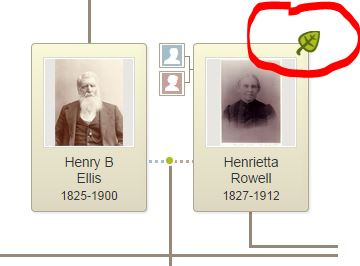
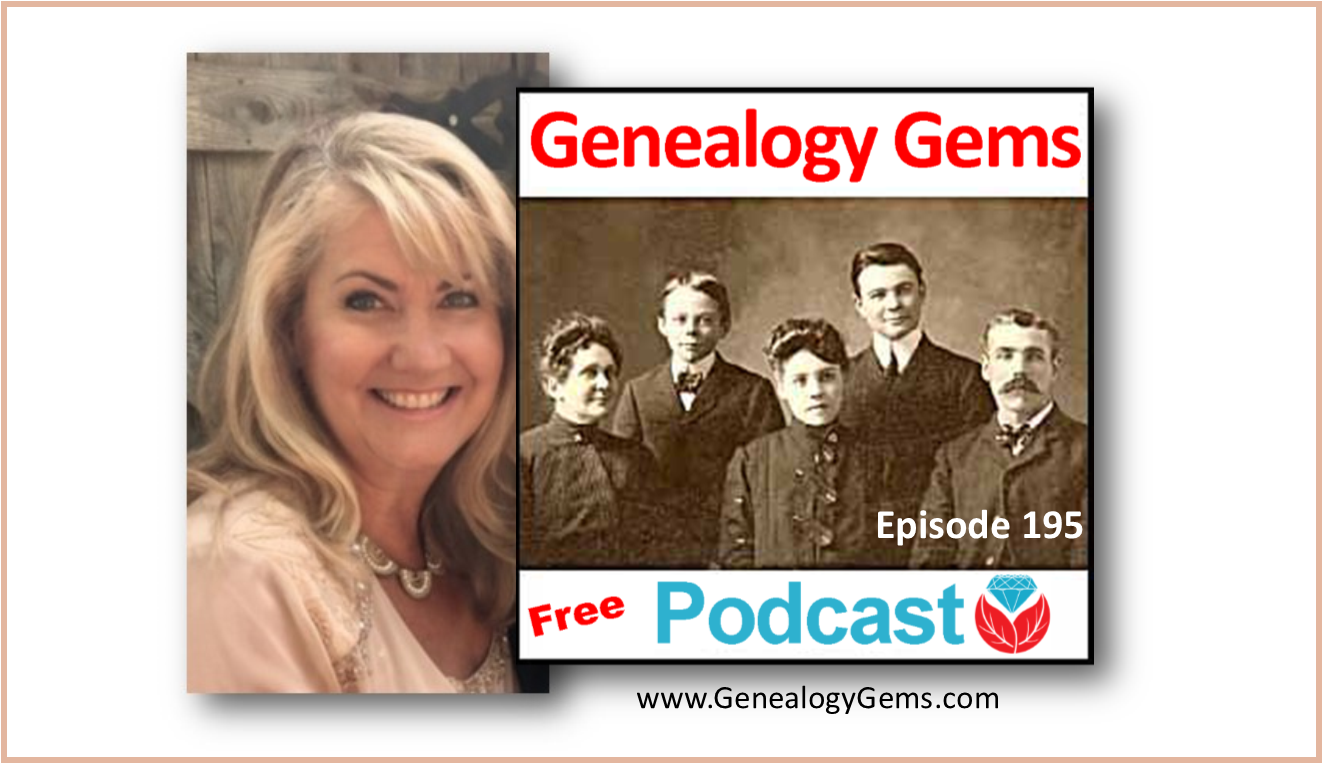
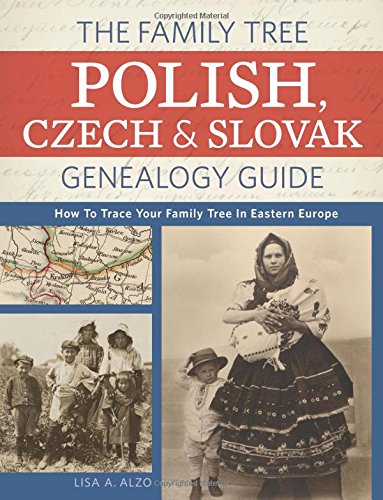

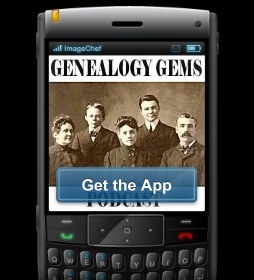

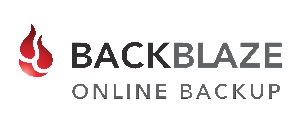
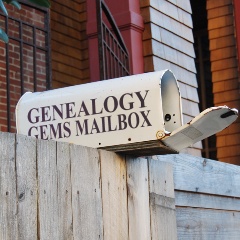 YouTube video with Robyn’s father:
YouTube video with Robyn’s father: 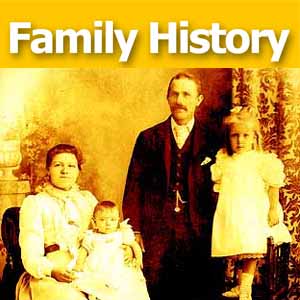
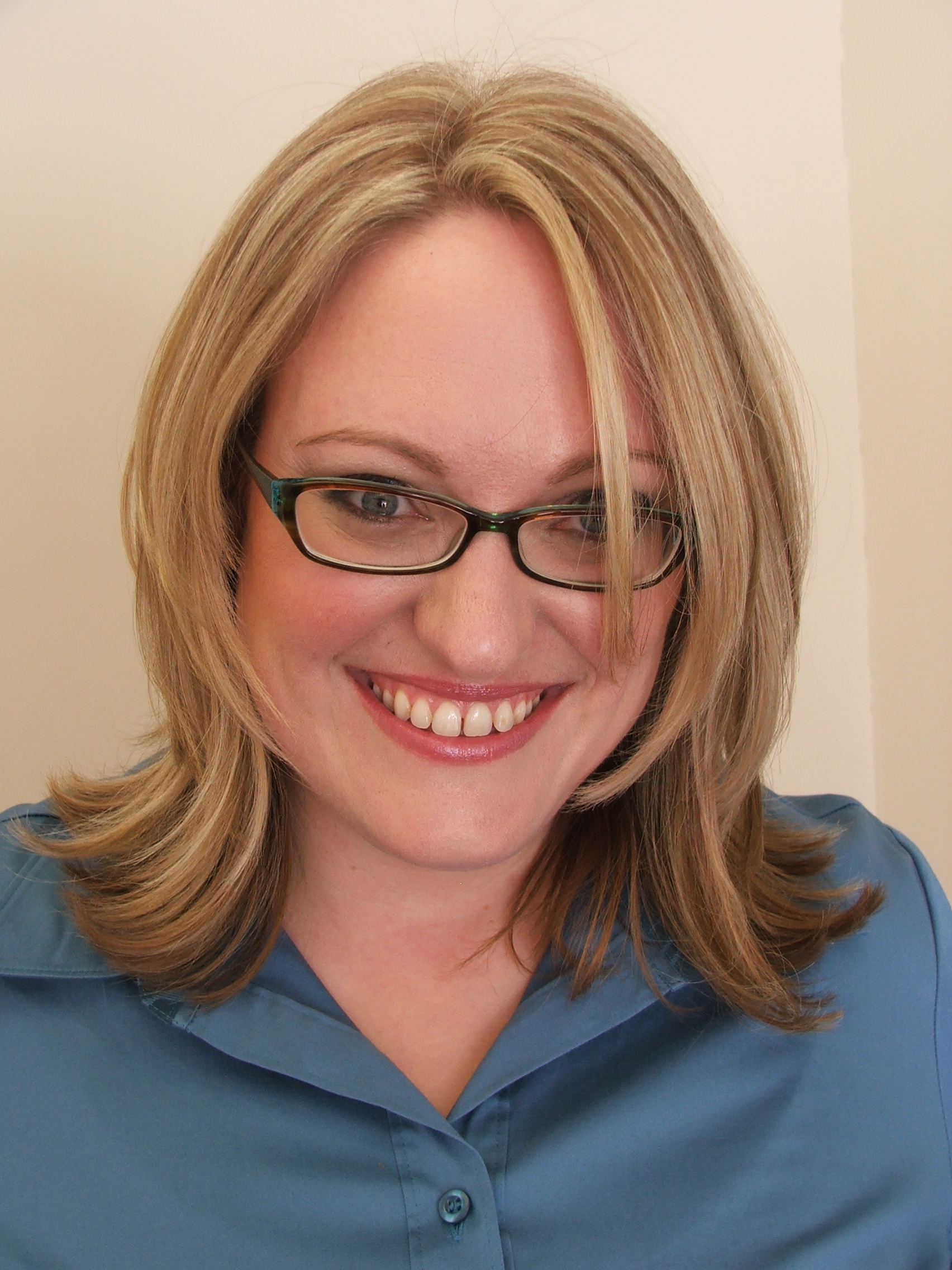



 MyHeritage.com
MyHeritage.com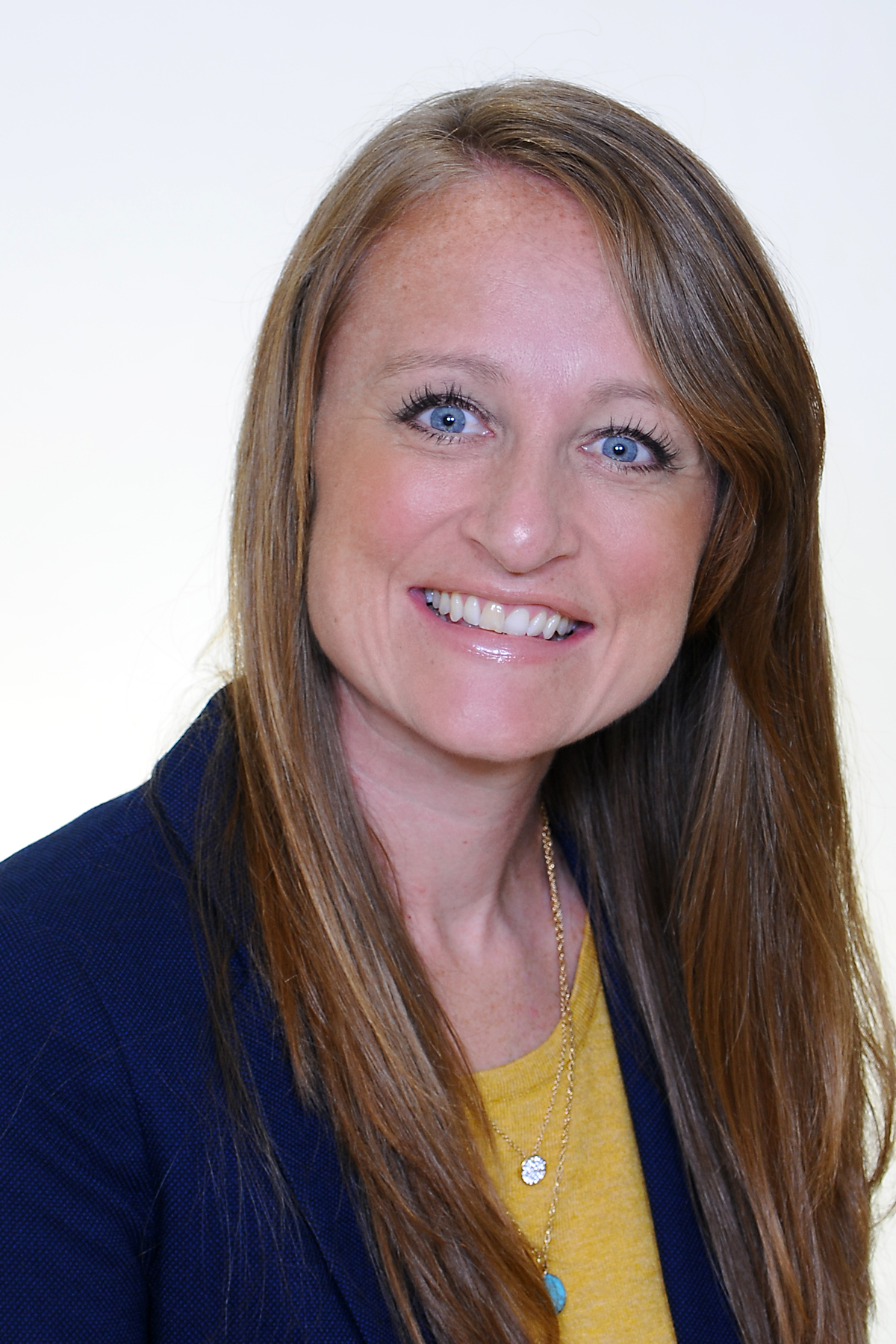 The genetic genealogy community has a crush. A big one. Everyone is talking about it. “It has such great features.” says one. “It has a chromosome browser!” exclaims another. “It’s FREE!” they all shout. What are they talking about?
The genetic genealogy community has a crush. A big one. Everyone is talking about it. “It has such great features.” says one. “It has a chromosome browser!” exclaims another. “It’s FREE!” they all shout. What are they talking about? 